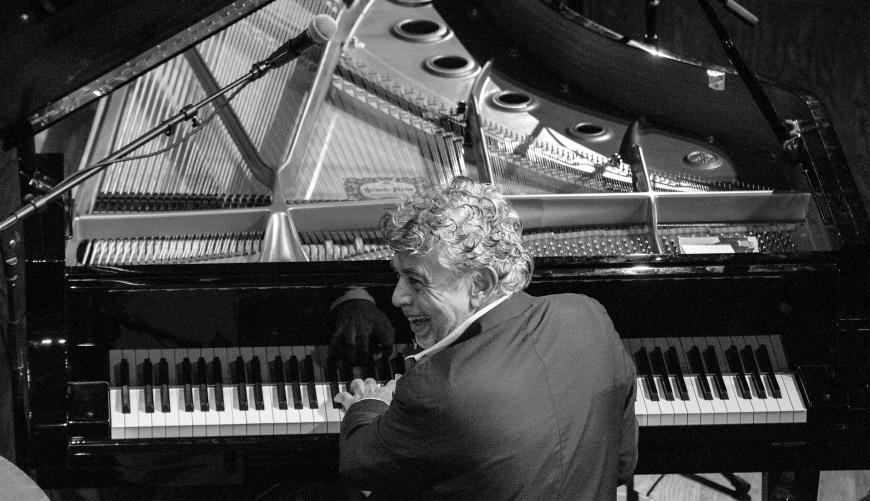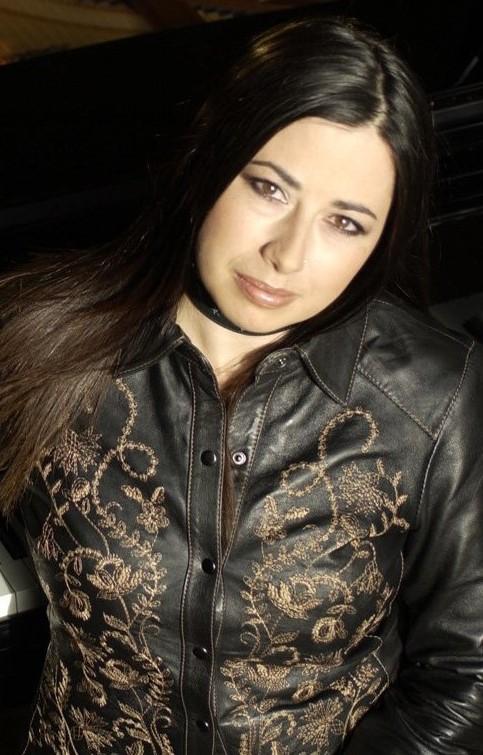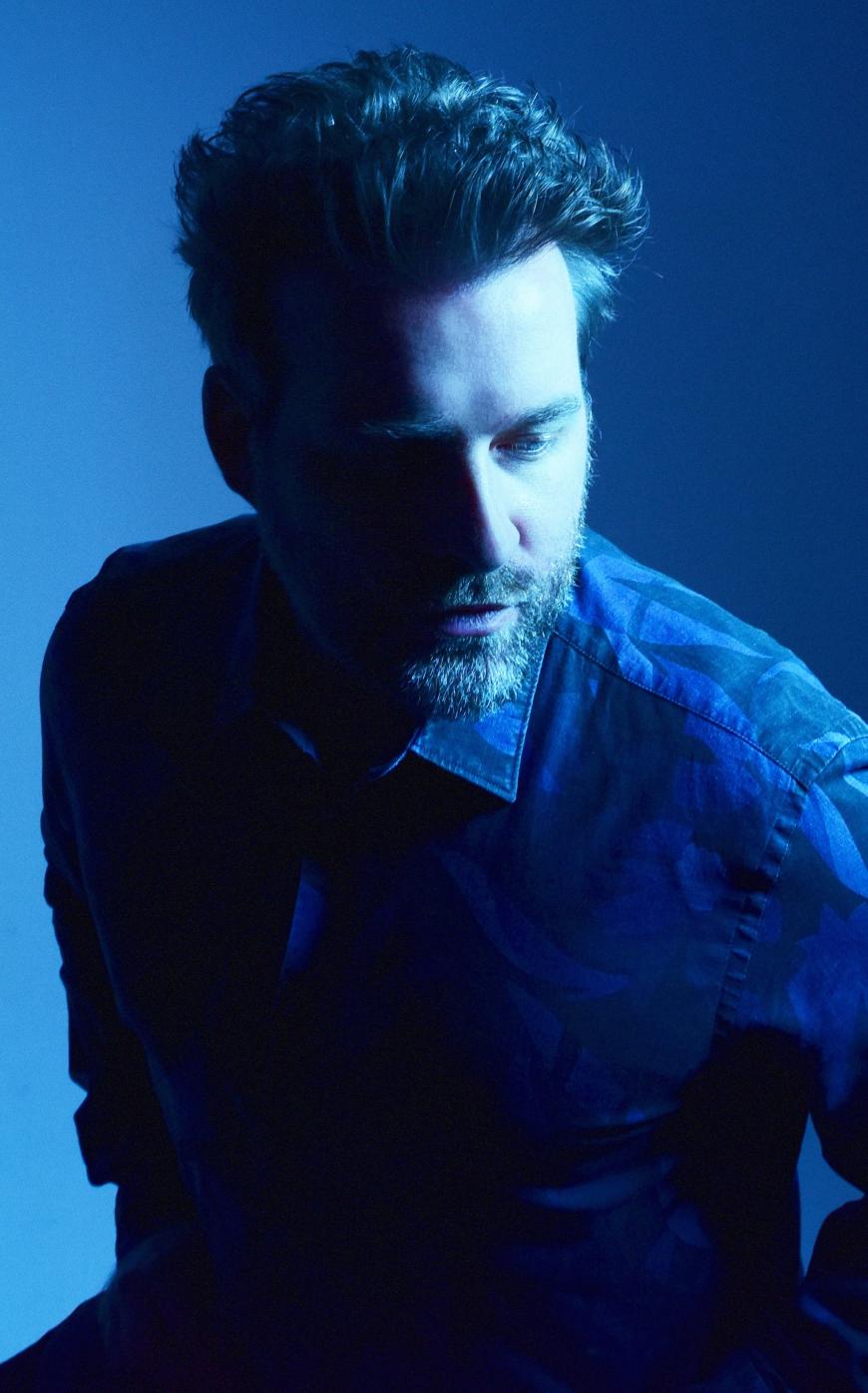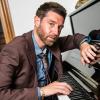
When it comes to the state of the art of piano jazz, this is an age of wondrous multiplicity. It’s not that the long shadows cast by players like Herbie Hancock, Keith Jarrett, McCoy Tyner, and Chick Corea have receded in recent decades. Rather, just as those keyboardists absorbed the vocabulary of the previous generations’ masters, their pervasive influence has now diffused into jazz’s lingua franca.
With no predominant figure, like Bud Powell in the 1950s or Bill Evans in the ’60s, this is an era in which a thousand flowers are blooming, and in the coming weeks, Bay Area stages host some of the most extravagantly creative pianists on the scene, from rising 20-something players like Jahari Stampley, who plays Black Cat Sept. 10, to veteran master Monty Alexander, who’s on the cusp of 80 and playing Yoshi’s Oct. 1 and Santa Cruz’s Kuumbwa Jazz Center Oct. 2.
Few musicians have embraced the full spectrum of keyboard possibilities with more energy and intelligence than Rachel Z, who performs at the California Jazz Conservatory this weekend, Sept. 8–9, with a stellar faculty band featuring drummer Gerald Cleaver, bassist Jeff Denson, and tenor saxophonist Dann Zinn. Her orchestral collaboration with legendary saxophonist-composer Wayne Shorter on his Grammy Award-winning 1995 album High Life cemented her dual identity as an artist creating venturesome work in various combinations of acoustic and electronic settings.

“I’m pretty much divided equally,” said Z, who was born Rachel Nicolazzo. “I include the piano in everything I do. I’ve got a 7-foot Fazioli at home, and I like to spend time with my friend. But I’m also a Roland artist, and I’ve got a lot of beautiful keyboards. I’m pretty committed to having the piano sound, but I do love layering electronic music. I just got a master’s in electronic composition from SUNY Purchase during the pandemic. It’s a lot of work, but I love all of it.”
Part of what distinguishes Z is her eagerness to put in the work, whether it’s mastering a new technology or delving into jazz’s earliest roots. A regularly occurring criticism of the contemporary jazz scene holds that young players sound too similar, that individual voices flourished when jazz education took place more through dues-paying in bands than in academia. As a professor of jazz and contemporary music studies at The New School since 2000, Z has a different perspective.
“Copying has always been the first step in jazz, figuring out what happened in the past,” she said. “But there wasn’t social media. You wouldn’t be aware of a young person’s work when they were just coming to jazz.”
Z’s own musical journey encompasses more than a century of evolution in Black American music, starting with her teenage fascination with ragtime. “I don’t reference ragtime, but I feel it,” she said. “I like to understand the culture around each time period. I got influenced by Bud Powell and Wynton Kelly and Red Garland, who was my dad’s favorite. I saw Oscar Peterson with Ella [Fitzgerald] at Carnegie Hall, and you can’t ignore that.”
Z studied directly with some of the music’s most potent and individual improvisers, including Joanne Brackeen, John Hicks, Fred Hersch, and Richie Beirach, “who are all amazing,” she said. “With the combination of all those teachers I was always getting yelled at to do something. Fred Hersch said, ‘Learn 200 standards in 12 keys.’”
At the CJC, Z will be playing tunes by Shorter and from her whole discography, including her upcoming 13th album, Sensual, which is slated for release next month. The project features a series of trios with her husband, Weather Report drummer Omar Hakim. The title track alludes to a subject she’s been thinking about a lot lately, the role of eros and sensuality, particularly relating to women jazz artists. (It’s not in the purview of this piece, but Shorter biographer Michelle Mercer recently posted a fascinating discussion with Z about sexuality and jazz on her Call & Response Substack.)
The Bay Area has witnessed the emergence of several generational jazz piano talents over the decades, and in the 21st century, the biggest story has been Menlo Park-reared Taylor Eigsti. In recent years he’s been most visible as a member of the Terence Blanchard E-Collective, which performs at the Monterey Jazz Festival Sept. 22 and Costa Mesa’s Segerstrom Center for the Arts Sept. 23.
As Blanchard settles into his new role as SFJAZZ’s executive artistic director, Eigsti has been taking whatever opportunities he can to repurpose the E-Collective for his own music, like the Sept. 22 Monterey date and a special preview Sept. 21 at San Francisco State University’s McKenna Theatre (with specially priced $10 student tickets). The SFSU date features his quintet with three E-Collective bandmates — bassist David “DJ” Ginyard Jr., drummer Oscar Seaton Jr., and guitarist Charles Altura — and keyboardist Maya Kronfeld, who, like Altura, is a Berkeley High School grad. Several special guests join the band in Monterey, including tenor saxophonist Ben Wendel.
Given his near-legendary pianistic prowess, Eigsti would seem to be the last player in need of some keyboard backup. But as he’s focused more on songwriting and composing for an expanded instrumental palette, Eigsti has found that a savvy keyboardist can make an invaluable contribution to his music. Rather than handling double duty, like he often does when playing piano and keys in the E-Collective, bringing Kronfeld into the fold “frees me up and allows for a more orchestral approach,” he said.

An old friend who’s both a stellar keyboardist herself and a recent Cotsen Fellow in humanistic studies at Princeton University, Kronfeld hasn’t had many opportunities to lead her own gigs in recent years. She’s been working mostly as an accompanist for leading artists such as performance poet Aja Monet, pianist-composer Samora Pinderhughes, and boundary-stretching vocalists Georgia Anne Muldrow and Thana Alexa.
“She has the dual life, and she plays her ass off,” Eigsti said of Kronfeld. “She makes so many incredibly tasteful decisions, with some harmonic directions that surprise and shock me. Playing piano is my happy place, and the simple truth is that I like how I’m playing better when she’s on keys. She’s a catalyst for positivity, and I love having her play in the group. We’ve been playing together intermittently since around the time Daylight at Midnight came out.”
Eigsti didn’t follow up that 2010 Concord Jazz album for a decade, and he’s still riding high from winning the Grammy Award for Best Contemporary Instrumental Album last year for Tree Falls, an ambitious, independently produced project featuring strings, woodwinds, and lapidary keyboard parts on about half the tracks. He’s getting ready to release a follow-up, “a continuation of what Tree Falls started,” he said, “reflecting all the different players who call each other for gigs.”
It’s a glittering roster of singular talents, including Blanchard, saxophonist Dayna Stephens, and vocalists Lisa Fischer, Gretchen Parlato, and Becca Stevens. “I love being a bandleader, but playing cool music with bandleaders I really respect, that’s my happy place, too,” Eigsti said. “I always want to be able to play in other people’s groups. I’m following the example of Terence Blanchard, who’s got his hand in so many different avenues but also plays in Herbie’s band. You never just have to play in one setting.”
For a glimpse at the emergent future of jazz piano, a good place to start is at Black Cat with Stampley, who’s giving a preview of his upcoming debut album, Still Listening. Recently named a 2023 Luminarts Fellow in jazz improvisation piano, Stampley is a Chicago-reared player who has duly impressed veteran artists like Z and Eigsti, who has yet to meet him in person. “But I’ve heard him a bunch of times, and he’s one of my favorite young players,” Eigsti said. “He’s got incredible facility and inherent soulfulness and authenticity. His left hand is phenomenal. He’s going to grow up and be a giant.”
Sometimes the most interesting context to catch a pianist in isn’t his or her own gig. Marc Cary, “a brilliant musical mind,” Eigsti said, plays in tenor saxophonist Stacy Dillard’s band at Black Cat Sept. 14–17. Vijay Iyer, a MacArthur Fellow and one of the most heralded pianists of his generation, plays with the Love in Exile trio, with vocalist Arooj Aftab and Shahzad Ismaily on bass and Moog, at The Ford in Los Angeles Sept. 20 and the Great American Music Hall in San Francisco Sept. 21. And Aaron Parks, who, like Eigsti, first gained attention as a preteen prodigy, plays a series of gigs with saxophonist Joshua Redman, including Kuumbwa Jazz Center Sept. 20, SFJAZZ’s Miner Auditorium Sept. 21, and Stanford’s Bing Concert Hall Sept. 22.
For sheer density of piano brilliance, the Monterey Jazz Festival is hard to beat. Over the course of the weekend, Sept. 22–24, the full keyboard garden is in bloom, with performances by Herbie Hancock, Billy Childs, Benny Green, Gerald Clayton, Kris Davis, Sullivan Fortner, Connie Han, James Francies, and Victor Gould. That’s some harvest.


